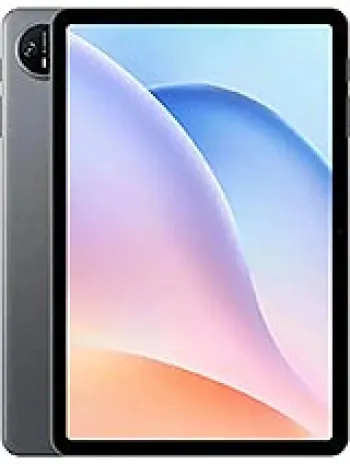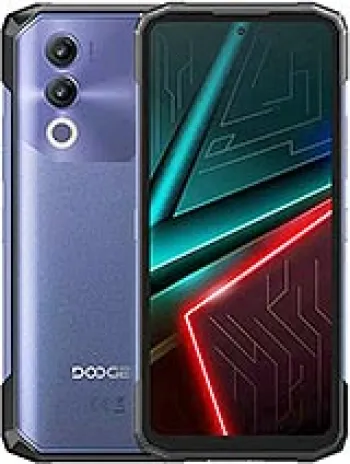
Overview
The Doogee U7 is an intriguing device introduced in 2021, offering an affordable pathway into the realm of large-display tablets. As a budget-friendly device, the Doogee U7 offers a modest blend of specifications that cater to essential multimedia consumption and basic tasks. This article delves into the various features and specifications that make up the Doogee U7, providing an in-depth analysis of its design, hardware, and performance capabilities.
Design and Build
The Doogee U7 is designed with practicality and durability in mind. Its dimensions stand at 209.5 x 142.5 x 20 mm, and it weighs 373 grams, making it slightly bulkier than many modern tablets. This heft gives it a solid feel in the hand, ideal for users who prefer a more substantial device. The absence of a SIM card slot or cellular connectivity indicates that the Doogee U7 is intended primarily for home or office use, relying on Wi-Fi for internet connectivity.
Available in Blue and Pink, the U7 offers some level of personalization, though it lacks the sleekness and modern cutting-edge design seen in more expensive tablets. However, the use of a 7.0-inch display ensures that the U7 remains suitable for media consumption, web browsing, and light gaming.
Display Characteristics
The Doogee U7's display is a 7.0-inch IPS LCD with a resolution of 600 x 1024 pixels. The screen-to-body ratio is approximately 46.2%, and the pixel density clocks in around 170 ppi. This resolution is quite modest, catering to basic functionality without the crisp or vibrant output seen in high-end devices.
Despite the limitations in resolution, the IPS LCD technology offers decent viewing angles and color reproduction, ensuring a satisfactory visual experience during video playback and reading applications. Users who need a device mainly for multimedia purposes might find the Doogee U7 adequate given its large screen size and overall usability for the price range.
Performance and Processing Power
Under the hood, the Doogee U7 is powered by a Mediatek MT6580 chipset which houses a quad-core 1.3 GHz CPU. This combination is competent for basic telecommunication needs, such as web browsing, media consumption, and light apps. The device operates on Android 10, ensuring compatibility with a wide range of applications available on the Google Play Store.
The processing capabilities, while not designed for heavy or resource-intensive tasks, are suitable for users who require a device primarily for emailing, social media, and video streaming. The 2GB RAM further outlines its limitations, facilitating operations that don't heavily rely on multitasking or high-powered requirements.
Camera Specifications
The camera setup on the Doogee U7 is minimalistic, featuring a single 2 MP rear camera capable of shooting videos at 720p at 30fps. While this doesn't compare with cameras on modern high-end devices, it provides a basic level of functionality suitable for day-to-day photography needs, such as document scanning or casual snapshots.
On the front, a 0.3 MP selfie camera is available. This is primarily for video calls and is sufficient in providing the bare minimum requirements for video conferencing. Given the emphasis on value over premium features, users seeking robust photography tools will likely need to look elsewhere.
Storage and Memory
The Doogee U7 comes equipped with 32GB of internal storage and the ability to expand via a microSDXC card slot. This feature is essential for users who anticipate needing additional space for their media files, applications, and documents. However, the limitation to only 2GB of RAM underscores the device's intended scope of usage as it cannot efficiently support heavy multitasking.
Connectivity and Audio
Despite the absence of cellular connectivity options, the Doogee U7 offers Wi-Fi 802.11 b/g/n and Bluetooth 4.0 for connecting with networks and devices. The provision of a 3.5mm headphone jack allows users to easily connect wired audio equipment. Loudspeakers also provide audio output for media consumption without additional peripherals.
The absence of GPS, NFC, and radio features highlight its focus as a stationary or home-based device, optimized for environments where Wi-Fi connections are predominant. Another strength of the U7 is its USB Type-C port with OTG support, allowing for faster data transfers and connection with external devices.
Battery Life and Charging
One of the more appealing aspects of the Doogee U7 is its battery capacity. A 3400 mAh non-removable battery powers the device, supporting a reasonable duration of use for standard activities. Coupled with a 10W wired charging capability, the U7 promises average efficiency in energy usage for extended media playback or browsing sessions.
This battery specification allows the U7 to serve efficiently during typical daily scenarios without frequent charging disruptions. Nevertheless, heavy users might experience noticeable energy drifts with battery-intensive applications or prolonged usage periods.
Conclusion
In summary, the Doogee U7 is positioned as an entry-level tablet with specific appeal to budget-conscious consumers and those seeking a secondary device for casual use. Its offerings are centered around fundamental features, embracing simplicity over sophistication. The focus on cost-effectiveness makes it suitable for individuals needing a large screen for basic tasks without the premium cost of high-end tablets.
While the absence of modern network features and lower camera quality might not appeal to everyone, the Doogee U7 adequately fulfills its promise of providing a substantial display and essential functionalities at a reasonable price point.
Key Features of Doogee U7
- Display: 7.0 inches IPS LCD for immersive viewing
- Operating System: Android 10 providing a modern software experience
- Processor: Quad-core 1.3 GHz for efficient performance
- Memory: 32GB internal storage with 2GB RAM and a dedicated microSDXC slot
- Camera: 2 MP main camera and 0.3 MP selfie camera for basic photography
- Battery: 3400 mAh with 10W wired charging for reliable power
- Connectivity: Wi-Fi 802.11 b/g/n and Bluetooth 4.0
- Audio: Equipped with a loudspeaker and 3.5mm headphone jack
- USB: USB Type-C 2.0 with OTG support for versatile connectivity
- Design: Available in vibrant Blue and Pink colors
Doogee U7 Disadvantages
- No cellular connectivity, limiting use to Wi-Fi only.
- No SIM card slot, making it impossible to use mobile data.
- Low screen-to-body ratio (~46.2%), resulting in larger bezels.
- Low display resolution (600 x 1024 pixels), leading to less sharp visuals.
- Basic camera quality with only 2 MP main camera and 0.3 MP selfie camera.
- No advanced sensors beyond an accelerometer.
- No GPS or positioning services available.
- Lack of NFC and radio features.
- Older Bluetooth version (4.0), which may affect device compatibility.
- Relatively heavyweight (373 g) compared to modern devices.

View Also
More Phones
All Rights Reserved +14269 Phones © Mobilawy 2025

























